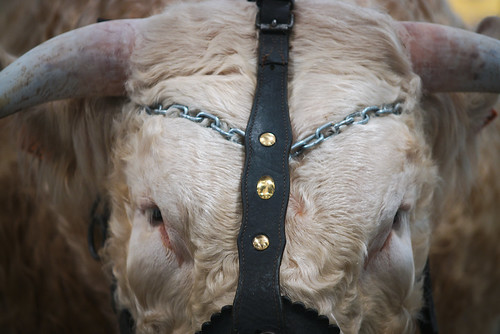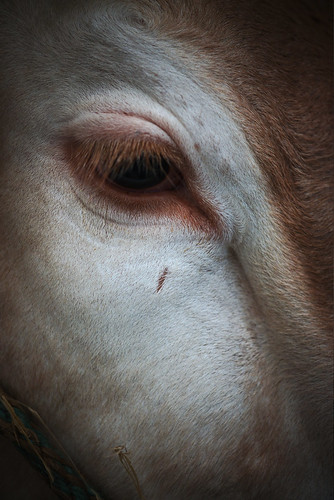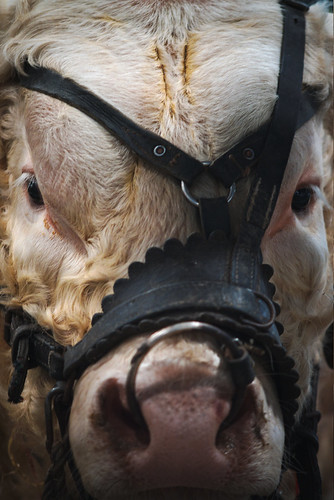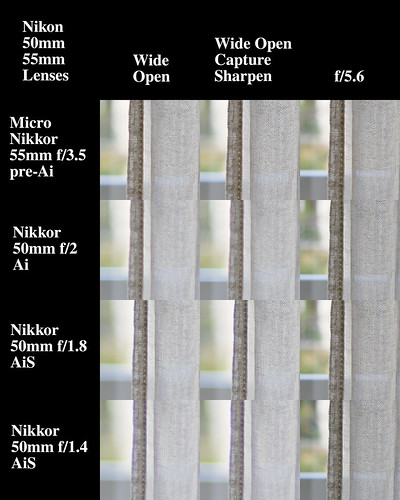I've spent many years looking at various characteristics of photographic imaging systems.
It started over 30 years ago with a question from a friend. He wondered if we could use my USAF resolution test chart from Edmond Scientific to see how his large format lenses performed. Kerry Thalmann and I looked at everything we could get our hands on.
After a physicist pointed out that "resolution" in common photographic use is really limited by the light sensitive materials (film, sensor) I turned my attention to understanding in to out of focus transition. This, it appears, is one area where differences in optical design and implementation can be most easily seen.
Even more recently I've taken a look at how image processing software can influence the appearance of sharpness in an image. Considering only the Rawtherapee Open Source Software application I've had a look at the detail enhancing "Capture Sharpen" function.
There is a lot to think about and learn. I'm enjoying the journey.
At all steps I've tried to keep in mind how all these things relate to the real world of practical engaged enthusiast photographic craft in image generation.
In April 2021 while we were mid-pandemic Mike Johnson posted an article on the "Perfect Portrait Lens."
Reading his article reminded me that I'd never fully explored the capabilities of 15cm, 21cm, and 210mm Voightlander Heliar large format lenses. I'd owned several them over the years after hearing about how they were "magic" when shot at or very near wide open. They had a veil of "softness" that overlaid a sharply rendered scene. The "look" was distinct.
Heliars, along with Petzval, Verito, Darlot, Portland, Pinkham Smith, Gundlach,and Kodak Portrait lenses were considered by a small community of cognoscenti as the Holy Grails of the photographic optical universe.
Moving to Europe necessitated a serious downsizing of my collection of photographic materials. Everything was sold at Fire Sale prices or given away to friends or the needy. All found new homes except a pair of Canon DSLRs and Sony NEX5 (original) cameras and lenses that fit into a suitcase.
Now that I'm fully retired, settled in Europe, and have plenty of time on my hands (time on my hands? right! and if you believe that, boy! do I have a bridge to sell you) I've wondered if I could find lenses for my digital cameras that had the characteristics I enjoyed when I shot large format film. I call it "chasing Pixies."
Taking everything I've learned and experienced thus far, and factoring Mike's comments on the "Perfect Portrait Lens" I finally feel I'm able to articulate in a clear manner what I'm looking for in lenses. And more practically, I'm beginning to photograph in a style that hopefully has a stronger sense of coherency from image to image by selecting my cameras, lenses, and choosing specific processing steps.
Optical case in point? Mike mentions the Nikon Series-E 75-150mm f/3.5 lens. He writes -
"...In the 1980s, Nikon introduced a small series of budget lenses called Series E to go with the tiny EM beginner's camera. To Nikon's embarrassment, professional photographers began snapping up the simple 2X 75mm–150mm Series E zoom. The reason was simple: the lens had a smooth, pleasant look that made models look great. (Those were the days before Photoshop, of course.) It's not that it was unsharp, but it wasn't forensic..."
I just happen to have one that I picked up for shockingly little money and I've had a look at it over the years. It's sharp from wide open, even at 150mm's. Some people find this lens too soft for their liking. Further, in the case of the lens I have, stopped down I can't tell the difference between it and my modern "wire sharp" lenses.
For me the "magic" is in the transition from in to out of focus behind the point of focus. Nikon appears to have put some effort into making this lens perform well in this area. It's only a 2x push/pull zoom. Nikon made more than a few of them and they tend to be easily found. This, I'm sure, is why mine came to me so easily. Perhaps people didn't really like them?
Of course I have to be different, right? I'm looking to find and justify small format replacements to my old large format lenses. So, to help prove to myself that this lens is "magical" in the ways I was looking for, I took it to the local farm show and deliberately shot as much as I could with it.
The illustrating Sony A6000, Nikon E-series 75-150mm f/3.5 images here are from the Salon International de l'Agriculture 2022. These were all shot at the supposedly worst, soft, ick! ack!! horrible, stay away from it!!! aperture - wide open. I applied no, none, zip, zero "Capture Sharpen." I adjusted the "curves" slightly and applied a G'Mic film emulation. That's it.
I find it fun chasing Pixies.


























